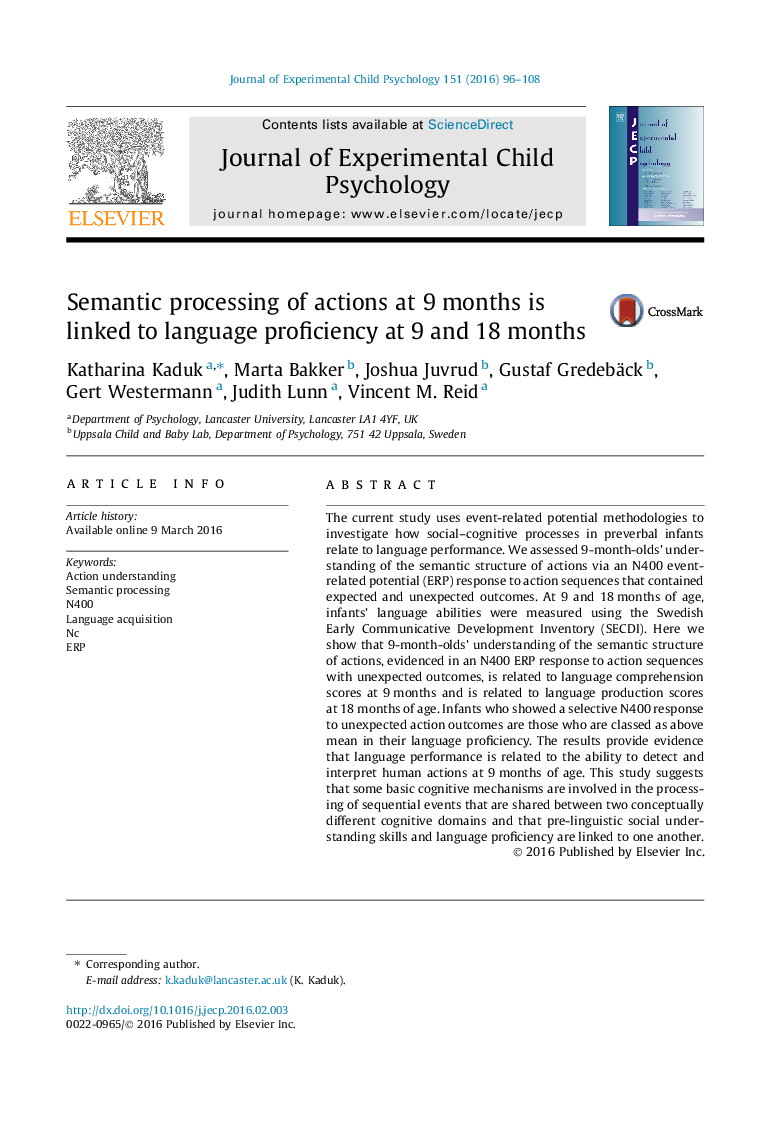| Article ID | Journal | Published Year | Pages | File Type |
|---|---|---|---|---|
| 5040089 | Journal of Experimental Child Psychology | 2016 | 13 Pages |
â¢Infants at 9 months were tested for producing an N400 for action semantics.â¢Higher language comprehension at 9 and 18 months produced an N400 at 9 months.â¢Infants with lower language comprehension did not evidence an N400 at 9 months.â¢Shared processing across both cognitive domains.
The current study uses event-related potential methodologies to investigate how social-cognitive processes in preverbal infants relate to language performance. We assessed 9-month-olds' understanding of the semantic structure of actions via an N400 event-related potential (ERP) response to action sequences that contained expected and unexpected outcomes. At 9 and 18Â months of age, infants' language abilities were measured using the Swedish Early Communicative Development Inventory (SECDI). Here we show that 9-month-olds' understanding of the semantic structure of actions, evidenced in an N400 ERP response to action sequences with unexpected outcomes, is related to language comprehension scores at 9Â months and is related to language production scores at 18Â months of age. Infants who showed a selective N400 response to unexpected action outcomes are those who are classed as above mean in their language proficiency. The results provide evidence that language performance is related to the ability to detect and interpret human actions at 9Â months of age. This study suggests that some basic cognitive mechanisms are involved in the processing of sequential events that are shared between two conceptually different cognitive domains and that pre-linguistic social understanding skills and language proficiency are linked to one another.
